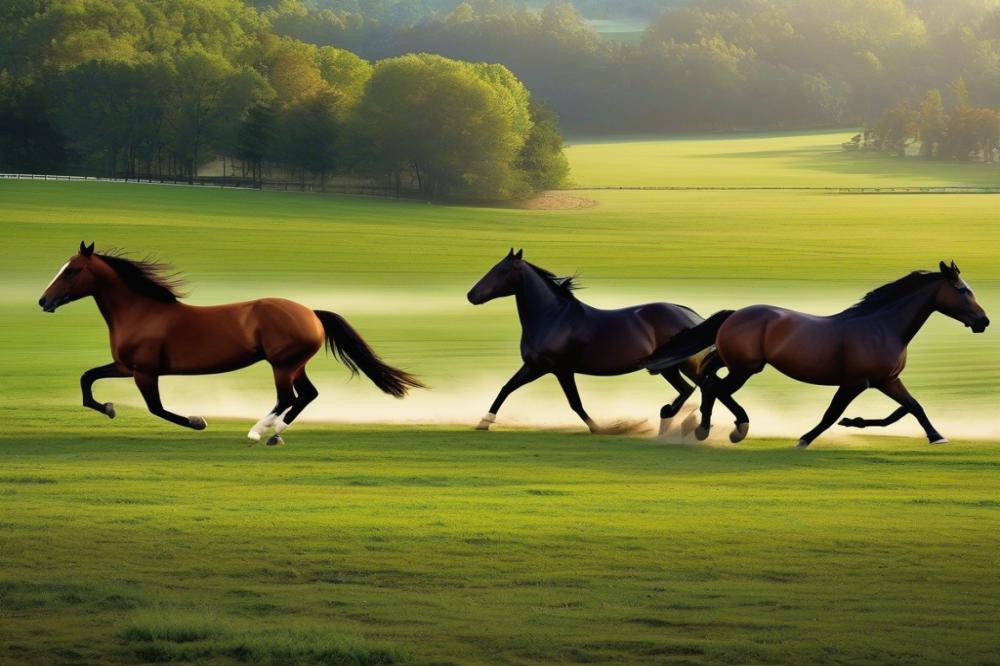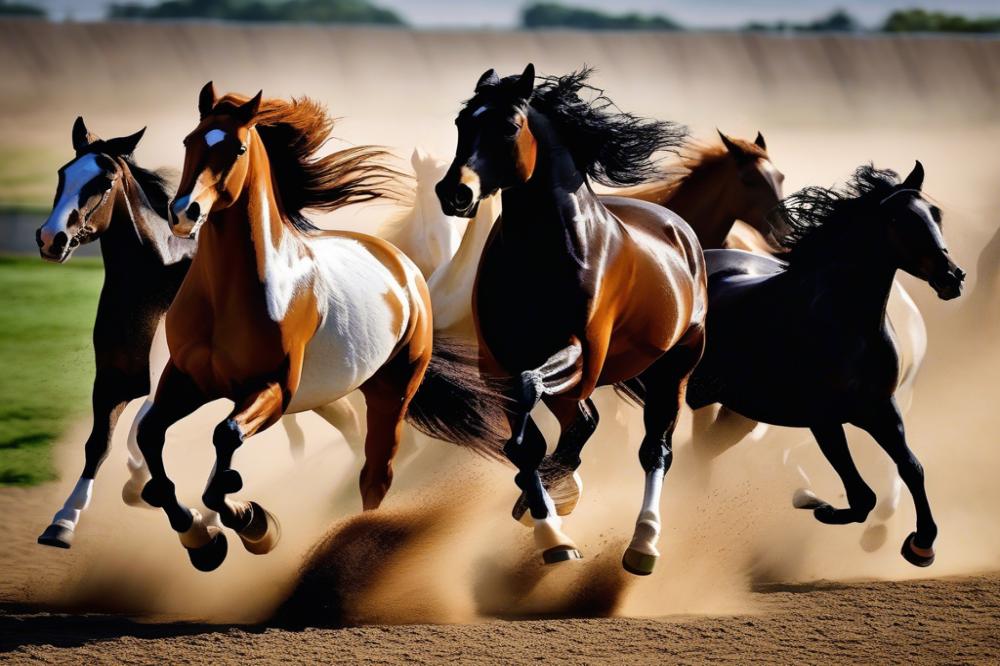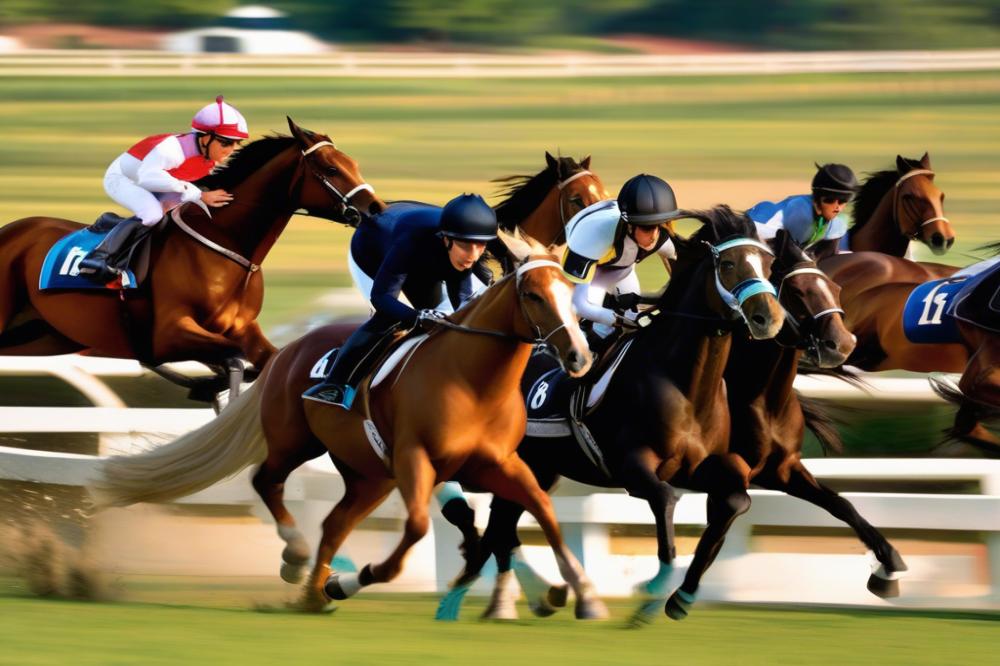Introduction
Selecting breeding horses with exceptional gait and movement is crucial in the world of equestrian sports. A horse’s way of moving affects not just its athleticism, but also its overall ability to perform tasks. Riders and trainers rely heavily on these qualities to achieve success in competitions.
In the realm of sports, performance can vary greatly based on how well a horse moves. For instance, jumping, dressage, and eventing each require specific gaits that contribute to a horse’s effectiveness on the course. Fluid motion can make all the difference during a round. Good movement allows for efficiency, agility, and power, all vital traits for athletes in this domain.
breeding horses with superior movement patterns showcases the commitment to improving future generations. These horses tend to excel, thanks in part to their inherited traits. When a horse displays good form while moving, it often translates to better speed and stamina during events. Gait influences not just competition outcomes, but also the horse’s health and well-being.
Ultimately, prioritizing gait and movement in the breeding process is essential. This careful selection can open doors to greater achievements and improve the overall quality of equestrian performances. Understanding the significance of these traits is important for anyone involved in the equine industry.
Understanding equine conformation

equine conformation refers to the physical structure and shape of a horse. This encompasses bone structure, muscle placement, and overall body proportions. Each aspect of conformation plays a significant role in how a horse moves. Breeders look at this carefully when selecting horses for their unique traits.
Key Conformation Traits That Influence Gait and Movement
Certain traits are more influential than others when it comes to movement. For instance, the length and angle of the horse’s legs can greatly affect its stride. Horses with straight legs tend to have better stability. Additionally, a well-rounded barrel allows for better lung capacity and stamina. The depth of the shoulder also plays a role in stride length. A sloped shoulder can promote a longer reach, enhancing the horse’s gait.
Relationship Between Conformation and Athletic Ability
The connection between conformation and athletic ability is profound. Horses with good conformation are often able to perform better in various disciplines. A balanced and well-proportioned horse typically shows superior agility and speed. Furthermore, conformation can affect endurance. Horses that have strong, powerful hindquarters tend to excel in tasks requiring strength. Observing how a horse’s body aligns with its movement can reveal potential athletic performance.
The Role of performance evaluation

Methods for Assessing Horse Performance
Performance evaluation is crucial in the selection process. Numerous methods exist to assess how a horse moves and behaves under various conditions. Observational assessments can be made when horses are in motion. Evaluators often look for rhythm, balance, and fluidity in their steps. Video analysis has also become popular. It allows for slow-motion reviews that highlight subtle details. Standardized performance tests can provide insights into speed and endurance. These evaluations help create a comprehensive performance profile.
Importance of Performance History in Breeding Selection
Historical performance data offers vital information in breeding decisions. A horse’s past results can point to its potential as a sire or dam. Those with a strong track record possess qualities that are likely to pass on to offspring. Understanding familial performance trends can reveal strengths and weaknesses. This historical context aids in recognizing which traits may enhance a future generation. Assessing performance history also fosters informed choices, ensuring better outcomes in breeding.
Evaluating Movement Patterns in Various Disciplines
Movement patterns differ significantly across disciplines, such as dressage, jumping, or racing. Each sport demands specific physical attributes and movements. In dressage, for instance, elegance and precision are key. Horses must demonstrate smooth transitions and a strong frame. Jumping requires different characteristics, like agility and explosive power. Evaluating these patterns is essential. Consultants often look for traits that align closely with the demands of the desired discipline. Watching horses perform in their specific contexts allows judges to witness their natural abilities. This understanding ultimately helps breeders select horses that are well-suited for their goals.
Horse Genetics and Gait

Genetics play a crucial role in determining how a horse moves. Various genes influence traits like the length of legs, body structure, and even muscle composition. These traits are important for overall gait quality. A horse’s pedigree often gives insight into its potential movement capabilities. Analyzing bloodlines helps breeders understand inherited traits that can affect performance.
When selecting horses for breeding, desirable traits matter greatly. Breeders look for specific characteristics that indicate strong movement and agility. Horses with a history of excellent gait in their lineage are often prioritized. This can include traits such as stride length or rhythm. Breeding two horses with complementary traits can improve the chances of producing offspring with optimal gait.
Genetic Testing and Its Relevance in Breeding Decisions
With advancements in genetic testing, breeders have powerful tools at their disposal. Tests can identify various genetic markers associated with movement traits. This information allows breeders to make more informed choices. For instance, knowing the genetic predisposition can help in selecting pairs that enhance desirable qualities. Such testing also reduces the risks of passing on unwanted traits.
Decisions based on genetic data provide an edge in the competitive world of horse breeding. Testing can reveal hidden strengths or weaknesses in a horse’s genetic makeup. Understanding these aspects can lead to better outcomes in the show ring or on race tracks. The right combination of genes can lead to exceptional movement abilities, which is ultimately what breeders aspire to achieve.
Conducting Gait Analysis
Gait analysis is essential when selecting horses for breeding. Observing a horse’s movement provides valuable insight into its potential. Various techniques can aid in the evaluation process. These methods often include visual assessment and high-speed video capture. In simple terms, watching the horse move closely can reveal a lot about its structure and function.
Techniques for Performing Gait Analysis
Visual inspection plays a crucial role in the initial evaluation. This includes assessing the horse in a straight line and during turns. Occasionally, a handler may need to walk and jog the horse. It helps to observe different speeds and angles. Another method involves using digital video technology, capturing the horse’s movement in detail. Analyzing video footage allows for repeated views, making it easier to focus on specific traits.
Tools Used in Gait Evaluation
Several tools can aid in gait evaluation. A basic tool is a stopwatch to track speed during movements. More advanced setups can involve motion capture systems. These systems provide detailed data points about each limb’s motion and position. Some professionals utilize force plates to measure ground reaction forces. Each tool serves a different purpose and provides unique insights.
Interpreting Results for Breeding Considerations
Understanding the results of gait analysis is vital for informed decisions. Positive traits include smoothness of stride and evenness of movement. Observers should note any irregular patterns or signs of discomfort. A horse showing obstacles in its gait may pass these traits to offspring. Selecting horses with optimal movement can improve the next generation’s capabilities. Additionally, it’s key to correlate physical structure with movement patterns. Strong conformation often leads to better performance in motion.
Breeding Criteria for Optimal Movement
When selecting horses for breeding, movement is a crucial factor. Observing how a horse moves provides insight into its potential offspring. Key criteria include stride length, symmetry, and rhythmic motion. Each of these aspects influences overall performance in disciplines like dressage, jumping, and racing.
Finding the right balance between conformation and genetic characteristics is important. A horse with excellent movement may still have structural flaws. The ideal candidate combines both desirable traits. This balance can enhance the chances of producing foals that excel in their chosen activities.
A breeding plan must be tailored to the goals of the horse owner. If the aim is to produce horses for competitive shows, focus on lineage with a history of success. Genetic testing can reveal hidden traits that influence movement. Such tests can also help avoid inherited disorders that could affect performance.
When developing this plan, consider the horse’s age, health, and training history. An older stallion with good movement may provide valuable genes. Meanwhile, a younger mare with potential can be a great investment. Reflecting on these factors is key to making sound decisions.
Incorporating proper evaluation methods is also essential. Regular movement assessments can highlight areas needing improvement. Veterinary insights can guide health-related decisions, ensuring both horse and foal reach their physical potential. Collaborating with professionals allows for a more thorough understanding of what makes a horse an ideal breeding candidate.
Finally, creating a breeding strategy focused on movement leads to better outcomes. This process often involves monitoring both genetic and observable traits over generations. The right approach requires patience and commitment, leading to superior horses with exceptional movement in the long run.
Impact on Equestrian Sports
Success in performance disciplines often hinges on the horse’s gait. A superior gait can lead to better scores and placements in competitions. Riders look for horses that move with grace and power. Smooth movement is not just attractive; it also increases efficiency.
Specific Movement Traits in Various Sports
Different equestrian sports demand particular movement characteristics. For dressage, a horse needs to perform intricate movements with precision. An impressive walk, trot, and canter contribute to a successful routine. Jumping, on the other hand, requires a horse to have strong, powerful strides to clear obstacles. The ability to adjust their gait quickly can help a horse navigate courses better.
Long-term Benefits of Gait Selection
Focusing on gait in breeding programs offers numerous advantages. Over time, horses bred for superior movement traits become more competitive. This not only improves individual performance but also elevates the overall quality of the breed. Breeders who prioritize gait may foster better health and soundness in their horses. Strong movement patterns also mean less wear and tear during training. Thus, these horses often enjoy longer careers in sports.
The Importance of Horse Training
Training plays a crucial role in enhancing a horse’s movement. It shapes how a horse carries itself, influencing both its performance and overall athleticism. A well-trained horse can display improved gaits that make it more efficient and graceful. This type of development is not merely about increasing speed; it encompasses balance, flexibility, and coordination.
Role of Training in Developing a Horse’s Movement
With consistent training, horses develop muscle strength and better joint flexibility. This is essential for achieving the desired movements. Horses that are conditioned properly are capable of performing tasks with greater ease. They learn to respond to cues from their riders or handlers. Furthermore, training builds a strong foundation for future skills.
Techniques to Improve Gait and Athletic Ability
Several techniques can enhance a horse’s performance. Groundwork exercises are beneficial for improving balance. These exercises, such as lunging, encourage proper posture and movements. Additionally, riding exercises like circles and transitions build coordination. Regular schooling can refine a horse’s natural gaits. Incorporating varied terrains during training can also be advantageous, as it challenges the horse and promotes adaptability.
Integration of Training with Breeding Goals
Aligning training with specific breeding objectives is vital. Proper training methods can help uncover a horse’s latent potential. Understanding the traits you wish to amplify can guide how you train. For instance, if a horse has a smooth trot, training should focus on enhancing that while developing even more refinement. Open communication with trainers helps keep the focus on achieving long-term goals.
Final Thoughts on Selecting Breeding Horses for Gait and Movement
In summary, selecting breeding horses requires thoughtful consideration of various factors. Understanding equine conformation is vital; it directly influences gait and movement efficiency. Look for horses that not only possess striking physical attributes but also demonstrate desirable movement patterns. Evaluating potential horses effectively includes observing their traits in action.
A holistic approach to breeding goes beyond mere physical looks. Breeders ought to consider the horse’s lineage and its proven track record in the performance evaluation process. Additionally, each horse’s temperament and training history should play a role in the decision-making process. By examining these elements, breeders can identify horses that complement each other, promoting better offspring.
Future trends in breeding are set to emphasize enhancing performance through movement. Advances in technology will likely lead to more precise ways to assess a horse’s abilities and predict outcomes based on their genetic inheritance. Breeders may turn to data-driven insights to make informed choices. This means the focus will shift increasingly toward ensuring superior movement dynamics and athletic ability are present in future generations.
Ultimately, the best practices for selecting breeding horses involve an integrated view of genetics, conformation, and movement. By prioritizing these aspects, the horse community can aspire to cultivate exceptional athletes, ensuring the legacy of quality horses for years to come.



